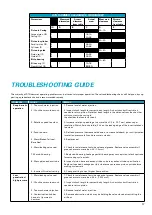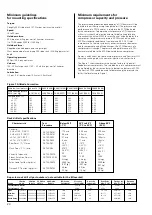
14
Assembly QLX 100
The DTH hammer assembly process is identical to the
disassembly process yet in reverse. The following guidelines
should be used:
• All parts should be clean and free of grit dirt and other foreign
material.
• All nicks and burrs on parts should have been removed.
• All parts should be coated with rock drill oil and preferably the
same type to be used on the drilling rig.
• All damaged o-rings should have been replaced if. All seals
should be oiled or greased to avoid cutting or tearing.
• If corrosion is common it may be useful to spray the threads
on the casing with a corrosion protector such as LPS Hardcoat
or equivalent. Make sure the threads are clean and dry and
sufficient drying time is allowed.
1. Lubricate the valve seals and install the valve in the valve
cap. Ensure that the valve cap/distributor o-ring is installed in
the valve cap and that the distributor plugs are installed in the
distributor.
Installing the valve in the valve cap.
2. Lower the valve cap/valve assembly over the distributor stem.
Installing the valve cap.
3. Place the valve cap/distributor assembly over the cylinder. Use
a brass bar to drive the assembly together until all faces mate
together.
Installing the distributor in cylinder.
4. The assembly can then be coated with rock drill oil and
installed in the backhead end of the hammer.
Installing the assembly in the hammer.
5. Lubricate and install the Belleville spring, check valve spring,
and check valve. Ensure that the spring is installed concave up.
Installing check valve.
6. Install backhead o-ring, apply thread grease, and install
backhead.
Installing backhead.
7. Moving to the chuck end of the hammer, install the piston. A
lifting device or strap should be used to help support the weight
of the part.
Lubrication and installation of the piston.










































